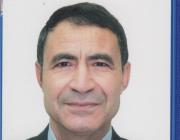Mechouma R, Azoui B, Ouchen S.
Fundamental frequency PWM control of IGBT clamped three phase nine levels inverter topology for photovoltaic system. 51st International Universities Power Engineering Conference (UPEC2016) [Internet]. 2016.
Publisher's VersionAbstractThe multilevel multi-string inverter has gained much attention in recent years due to its advantages in lower switching loss, better electromagnetic compatibility, higher voltage capability, and lower harmonic distortion. Solar Energy is one of the favorable renewable energy resources and the multilevel inverter has been proven to be one of the important enabling technologies in photovoltaic (PV) utilization. As the number of levels increases, it is important to control more switches in parallel with their concurrent processing capability. This paper proposes an IGBT clamped three phase nine levels photovoltaic inverter topology with a multicarrier dual reference pulse-width modulated (PWM) control scheme. Four carrier waves of the fundamental frequency and different amplitudes are compared with two references (a sine wave and its opposite) for generating the control signals of the switches. Some DC/DC boost converters are used to amplify the voltage produced by the photovoltaic generators. Each of these converters is controlled by an MPPT algorithm in order to track the maximum power point of the GPV. Results of simulation in Matlab environment are given and discussed.
 upec_2016_paper_143.pdf
upec_2016_paper_143.pdf Yettou F, Gama A, Panwar NL, Malek A, Azoui B.
Experimental investigation of thermal performance evaluation and thermodynamic analysis of domestic box type solar cooker with inclined aperture area. Revue des Energies Renouvelables CDER [Internet]. 2016;19 (2) :211-224.
Publisher's VersionAbstractIn this paper, the thermal performances of a box solar cooker were rated with F1 and F2 parameters as per Mullick’s procedure [1], the efficiency of the cooker was evaluated using energy and exergy analysis. The solar cooker was designed with an inclined aperture area, realized and experimentally tested at Applied Research Unit on Renewable Energies of Ghardaïa (32.39 °N, 3.78 °E, 463 m), Algeria. The developed cooker is equipped with one reflector mirror on its lid. The experiments have been carried out with the cooker empty, filled with one or two liters of water from 08:00 to 15:00 solar time, the thermal profiles of various components of the cooker were assessed at Ghardaïa site Sahara climatic conditions on clear days in both winter and summer months. According to the values of two figures of merits suggested by International Standards and evaluated by the experimental studies, the configuration with an inclined aperture area of the cooker resulted in good cooking performances, especially in winter when the sun’s elevation is low; keeping the realized cooker performances in range of the international standard tests. The results of this study indicate also that the average daily energy and exergy efficiency of the realized cooker was 16.2 % and 0.90 % respectively, during the experimental period, which indicate a significant difference between the results of energy and exergy analyses. Thus developing such a box solar cooker can improve the efficiency of the design and use a position of the system to prepare food in a shorter time.
 yettou-rev-nat-2016.pdf
yettou-rev-nat-2016.pdf RABIAA.Mechouma, HANIA.Aboub, BOUBAKEUR.Azoui.
MULTICARRIER WAVE DUAL REFERENCE VERY LOW FREQUENCY PWM CONTROL OF A NINE LEVELS NPC MULTI-STRING THREE PHASE INVERTER TOPOLOGY FOR PHOTOVOLTAIC SYSTEM CONNECTED TO THE MEDIUM ELECTRIC GRID. Journal of Electrical Engineering [Internet]. 2016;16 (2) :293-298.
Publisher's VersionAbstractThe multilevel multi-string inverter has gained much attention in recent years due to its advantages in lower switching loss, better electromagnetic compatibility, higher voltage capability, and lower harmonics. Solar Energy is one of the favorable renewable energy resources and the multilevel inverter has been proven to be one of the important enabling technologies in photovoltaic (PV) utilization. This paper proposes a diode-clamped three phase nine levels grid connected photovoltaic inverter topology with a multicarrier dual reference pulse-width modulated (PWM) control scheme. Eight carrier waves of the same frequency and different amplitudes are compared with two references (a sine wave and its opposite) for generating the control signals of the switches. Some DC/DC boost converters are used to amplify the voltage produced by the photovoltaic generators. Each of these converters is controlled by an MPPT algorithm in order to track the maximum power point of the GPV; Results of simulation in Matlab environment are given and discussed.
 article-mechouma-2016.pdf
article-mechouma-2016.pdf 